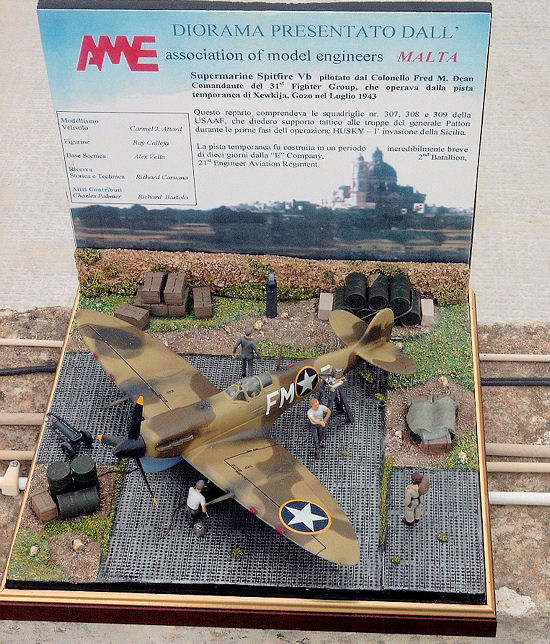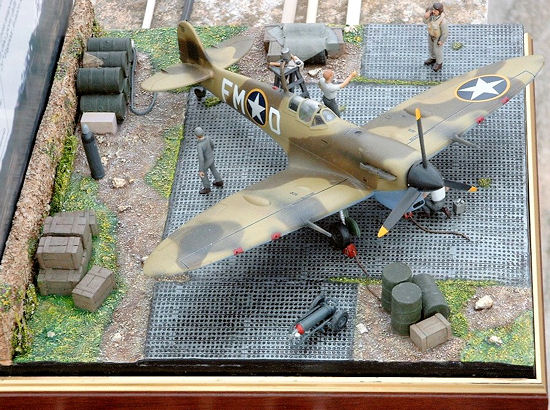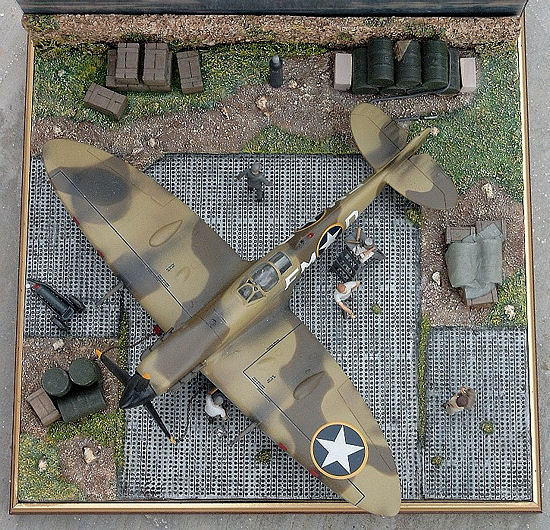 Spitfires at Gozo
Spitfires at Gozo
 Spitfires at Gozo
Spitfires at Gozo
In the early months of 1943, the allies made a decision of great magnitude, one that was unstoppable and was to have grave consequences. With “Operation Husky” the fate of Italy has been sealed. Invading occupied Europe from the south meant that a plan was set for the landing attack on Sicily, which will open its way for the rest of the continent. This was the selected time when the Air Battle over Malta was truly won with over 100-0 enemy aircraft lost over the central Mediterranean island and the surrounding sea. As a result it was natural that the island was chosen as the initiating base for the attack.
General George Patton had to rely on a strong aerial support that could maintain superiority at all time. Escort fighters as the Spitfire had to be based closer to the operation zone owing to their restricted range. The massive airfield infrastructure in Malta included Hal-Luqa, Ta’Qali, Hal-Safi, il-Qrendi and Hal-Far. In spite of so many airfields over the island, congestion was going to be inevitable due to strong RAF presence and the USAAF required space as well. The ‘unsinkable aircraft carrier’ as Winston Churchill dubbed the island, had no more space for new airfields being built and the only solution was to turn to Gozo, a hilly territory that forms part of the Maltese archipelago.
Lord Gourt then the Governor of Malta along with Air Vice
Marshal Sir Keith Park and a number ofAmerican and British military engineers carried out a
survey to locate a suitable site on the tiny island. Xewkija village offered the best solution for the 200
acres required. Local farmers gave up the fertile landon temporary basis and in return adequate remuneration was
offered in compensation for loss of produce. Sir Keith Park asked for assistance from American
engineers as the invasion of Sicily was imminent and the airfield needed to be active in a very short time. The 21st
Engineer Aviation Regiment of the USAAF arrived on the 6th of June 1943 from Tunisia
and unloaded their heavy equipment at
 Marsalforn Bay. The unit consisted of just over 200 personnel with equipment
transported on nine landing craft with tanks, 24tractors, and three bulldozers among others. This vast
amount of modern equipment was the envy of British engineers who could never in their wildest dreams ever
think that such equipment could find its way on the remote island of Gozo. There were some 200 local Gozitans
who gave a helping hand with the construction of the airfield. These along with Americans
worked from early in the morning ill late in the evening so much so Sir Keith Park was surprised with the
quality and speed with which the project was being undertaken. He ordered the construction of a second
airfield of same dimensions as the first one. These also contained revetments and hard standing for at least 76
combat aircraft.
Marsalforn Bay. The unit consisted of just over 200 personnel with equipment
transported on nine landing craft with tanks, 24tractors, and three bulldozers among others. This vast
amount of modern equipment was the envy of British engineers who could never in their wildest dreams ever
think that such equipment could find its way on the remote island of Gozo. There were some 200 local Gozitans
who gave a helping hand with the construction of the airfield. These along with Americans
worked from early in the morning ill late in the evening so much so Sir Keith Park was surprised with the
quality and speed with which the project was being undertaken. He ordered the construction of a second
airfield of same dimensions as the first one. These also contained revetments and hard standing for at least 76
combat aircraft.
Just like the present day summers,
throughout the construction period of the runways, dust was
the menace and the ground had to be sprayed with seawater
and rolled regularly. On the 3rd of June marked the first aircraft
to touch down in Gozo. One of several flown was the Supermarine Spitfire Vc from
the Squadron 31st Fighter Group USAAF. The Group had 3 Squadrons:
307,308 and 309 that crossed from Tunisia via Hal-Safi in Malta. A considerable
sized airfield was built in 18 days, which was an engineering achievement in
itself. The full strength of the Spitfire
 provided most able contribution on the
10th of July, the day of the Sicilian invasion. The Xewkija airfield
served as a launch pad for the USAAF fighters and also as an emergency landing
strip. In five days the allies had a good foothold on the Sicilian soil ands
soon afterwards the US contingent in Gozo moved to liberated airfields in Sicily
and Southern Italy. Following that and for a brief period the airfield also
served as a staging post for Piper Cub L-4 crossing from North Africa to Sicily.
By August the airfield has fallen into disuse and by June 1944 it was restored
to its original fertile land and handed back to its original owners.
provided most able contribution on the
10th of July, the day of the Sicilian invasion. The Xewkija airfield
served as a launch pad for the USAAF fighters and also as an emergency landing
strip. In five days the allies had a good foothold on the Sicilian soil ands
soon afterwards the US contingent in Gozo moved to liberated airfields in Sicily
and Southern Italy. Following that and for a brief period the airfield also
served as a staging post for Piper Cub L-4 crossing from North Africa to Sicily.
By August the airfield has fallen into disuse and by June 1944 it was restored
to its original fertile land and handed back to its original owners.